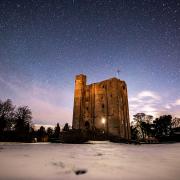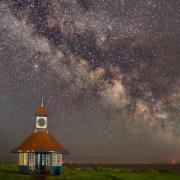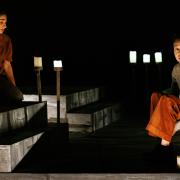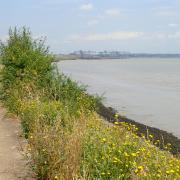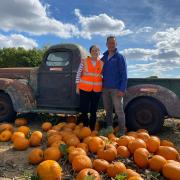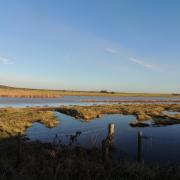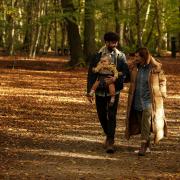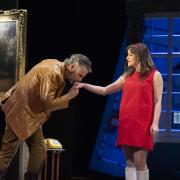This time of year animals start to emerge from their winter hibernation as the warming weather welcomes them back into the world. The priority for the months ahead is to find the perfect mate, to create the next generation of snuffling hedgehogs, playful badgers, slithering snakes and melodic songbirds. As spring draws near, it is an exciting time for nature lovers. Courtship rituals, where animals behave in unique and interesting ways to attract a mate, are wildlife spectacles to behold.
Here are some courtship displays that shouldn’t be missed…
Boxing hares
Across open farmlands, grasslands and at woodland edges, the fastest mammal in Britain may be seen energetically bounding along. If you are lucky, you may spot the recognisable black tips decorating their long ears through the grasses, as hares graze on young trees, bushes or vegetation.
Perhaps the best-known courtship ritual of all UK wildlife, the boxing of brown hares is unmissable and can be seen in Essex. You may think that male hares stand up on their hind legs, arms outstretched, fighting each other for their female. However, it’s the female hares that initiate the first punch. If a male is too persistent in his chase, the female will let him know. It is, therefore, a ritual of dismissal.
Blue House Farm nature reserve is a great place to watch them from March, and you can enjoy a coastal stroll too.

Essex’s songbirds
Essex Wildlife Trust’s first nature reserve, Fingringhoe Wick Nature Discovery Park, in Colchester, is a stronghold in the UK for the country’s most symphonic singers. Despite a staggering decline of 92% in the last 50 years, these hard-to-spot migratory birds come to Fingringhoe each year in April to sing their beautiful song.
You will only hear male nightingales bursting into song in the springtime, and it is their rich repertoire that makes their song distinct in the natural world. Astonishingly, nightingales can produce more than 1,000 sounds. In comparison, skylarks produce 340 and blackbirds produce 100.
Fingringhoe Wick offers guided walks and late-night openings when nightingales arrive, so keep an eye on the Trust’s website for bookings.

Dance of the adders
Although not the only dancers of the animal kingdom, an adder dance is a spectacle that is on most wildlife lovers’ bucket lists. After spending the winter curled up tight in hibernation, adders are ready to wriggle and contort their long bodies to find a perfect match.
Adders love the sunshine, so will surface to bask in the sun’s rays. Once they are warm enough and have shed their old skin, they are ready to dance. As adders slither slowly on their way to find a mate, often they can cross paths with a competitive male – and so begins the dance.
If another male is a threat, the two competitor snakes will raise their heads from the ground, and their bodies will entwine together in a show of strength. They aim to press each other to the ground and keep their head above their rival.

Dancing on water
The great crested grebe is the largest member of the grebe family, recognisable by its ornate head plumage – with gingery red feathers and black spiked tufts. In the mating season of February to April, these birds put on a majestic display.
Their dance begins when one has accepted the other with a ruffle of feathers. Next, they face each other, shaking their heads from side to side. Then, the grebes dive gracefully down, resurfacing with clumps of weed in their bills. As they rush towards each other, they rear out of the water and paddle wildly. This is repeated until the birds are paired.
If you miss out on their courtship rituals, don’t worry. Great crested grebe chicks are a sight in themselves. With black and white striped heads, spot them resting on their parent’s back as they hitch a ride on the water.
The best reserves to look for this display are Hanningfield Reservoir Nature Discovery Park and Abberton Reservoir Nature Discovery Park.
If you want to learn more about animal attraction, why not listen to Essex Wildlife Trust’s interview with Jules Howard, wildlife expert and zoologist, on the Trust’s podcast? He shares weird and wonderful stories of courtship and mating in the animal kingdom. Just search ‘The Wildlife Explorer’ on your usual podcast streaming platform.




